 Mr Darcy the senior Maltese arrived at the Home as a stray with an affliction on almost every inch of his body. Immediately, our vet team noticed he was underweight with gunky eyes, dirty ears, chipped teeth and matted fur. To make things even more challenging for Mr Darcy, he also appeared to be hard of hearing and vision impaired. Despite this, he was a very friendly boy.
Mr Darcy the senior Maltese arrived at the Home as a stray with an affliction on almost every inch of his body. Immediately, our vet team noticed he was underweight with gunky eyes, dirty ears, chipped teeth and matted fur. To make things even more challenging for Mr Darcy, he also appeared to be hard of hearing and vision impaired. Despite this, he was a very friendly boy.
It was clear My Darcy needed a great deal of attention to give him a much-deserved second chance at a comfortable life, so our vet team set some appointments and sent samples to pathology to help diagnose and resolve Mr Darcy’s long list of ailments.
These issues would have been causing Mr Darcy a great deal of pain, so our team got straight to work, administering anti-parasitic treatments, cleaning and clipping his fur and nails, flushing out his infected ears, doing a scale and polish on his few remaining teeth and prescribing medications to resolve his eye, ear, anal and skin conditions.
Scans and pathology results showed Mr Darcy suffered from:
- chronic skin disease (dermatitis)
- dry eye (inability to produce tears)
- chronic otitis (long-lasting ear infection)
- severe dental disease
- active chronic inflammation of his anal glands
- anaemia
- papillomas on his face (benign warts caused by canine papillomavirus)
- B1 Mitral Valve Disease (heart disease).
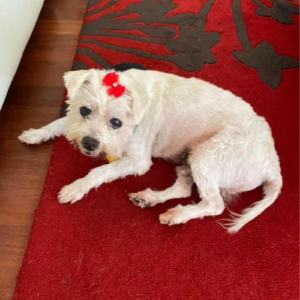 While in the Home’s care, Mr Darcy was given a Hill’s Science Diet consisting of wet food, which within a month had helped him gain much-needed weight, and recover from his anaemia.
While in the Home’s care, Mr Darcy was given a Hill’s Science Diet consisting of wet food, which within a month had helped him gain much-needed weight, and recover from his anaemia.
Thanks to the help of his foster carer, who assisted with regular eye drops, ear medication, antibiotics and pain relief, Mr Darcy looked like new man just weeks after his arrival. While he still has some chronic conditions that sadly can’t be completely resolved, with proper care, he’s now enjoying a great quality of pain-free life.
In foster care, Mr Darcy proved to be a very sweet dog with a love of food and human company, so combined with his friendly face and personality, he was a popular boy when he went up for adoption. But Mr Darcy also needed a very special home, with a very special family who could commit to monitoring and responding to his chronic health issues.
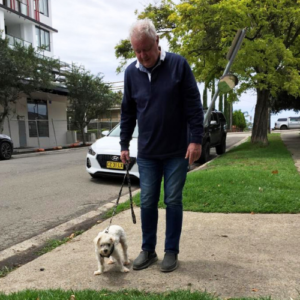 Luckily, it wasn’t long before the right family came along. Mr Darcy was adopted in December 2020 as a bright and comfortable senior, completely unrecognisable from the dirty Maltese who had arrived just six weeks prior.
Luckily, it wasn’t long before the right family came along. Mr Darcy was adopted in December 2020 as a bright and comfortable senior, completely unrecognisable from the dirty Maltese who had arrived just six weeks prior.
As Sydney’s only charity pound and community facility, we rely on donations to give senior pets a second chance in life. Donate today to the Senior Pet Project to give pets like Mr Darcy the care and treatment they need to thrive in their twilight years.
ABOUT THE SENIOR PET PROJECT
In its third year, our Senior Pet Project was started as an initiative not only to put a spotlight on golden oldies to help with their rehoming, but also to raise the funds required for their much needed veterinary care and often prolonged stay at the Home.
With your support we are looking to raise $50,000 to help fund the Senior Pet Project in the months ahead, enabling us to give the seniors entering our care a new leash on life.




 MON-SUN:
MON-SUN:
 02 9587 9611
02 9587 9611 INFO@SYDNEYDOGSANDCATSHOME.ORG
INFO@SYDNEYDOGSANDCATSHOME.ORG






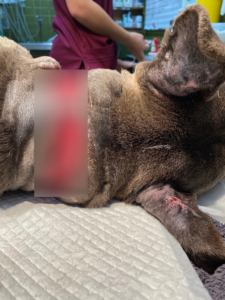 After an exam, our vet team determined Obi needed urgent surgery under anaesthesia to remove his collar. He immediately went into surgery, the collar was cut off and his wounds were cleaned, alleviating what could have been months of pain.
After an exam, our vet team determined Obi needed urgent surgery under anaesthesia to remove his collar. He immediately went into surgery, the collar was cut off and his wounds were cleaned, alleviating what could have been months of pain.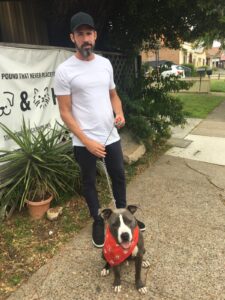 During the early stages of adoption, James was with Obi almost 24 hours a day, 7 days a week. We’re told Obi was house trained in two days, and within the first week, had mastered stop, sit, lie down, shake hands and to stop pulling on his leash. To this day, Obi practices his cues every night. James tells us, “it has not been easy, but worth every minute. We are both better off.”
During the early stages of adoption, James was with Obi almost 24 hours a day, 7 days a week. We’re told Obi was house trained in two days, and within the first week, had mastered stop, sit, lie down, shake hands and to stop pulling on his leash. To this day, Obi practices his cues every night. James tells us, “it has not been easy, but worth every minute. We are both better off.”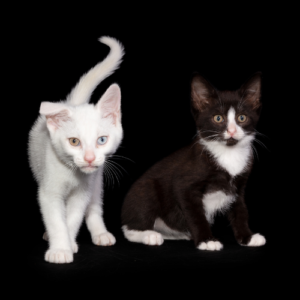 What causes deafness in cats?
What causes deafness in cats?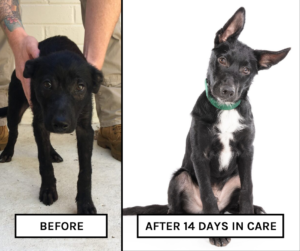 Miracles aren’t just for Christmas, with our team working tirelessly throughout the year to transform the lives of the stray and neglected pets who frequently arrive on the doorstep of Sydney Dogs & Cats Home.
Miracles aren’t just for Christmas, with our team working tirelessly throughout the year to transform the lives of the stray and neglected pets who frequently arrive on the doorstep of Sydney Dogs & Cats Home.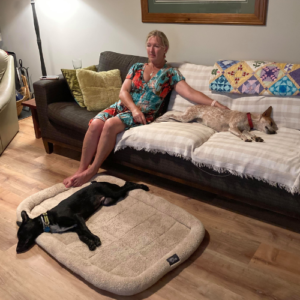 After just one month in our care, Munroe (now named Sunny) was adopted by Robert and his family, just in time for Christmas. Munroe now has a canine companion named Rosie, and we’re told they’re very happy together, especially when they’re exploring the bush. Robert said, “He is such a sweet boy, putting on weight, growing and [has] a really shiny coat.”
After just one month in our care, Munroe (now named Sunny) was adopted by Robert and his family, just in time for Christmas. Munroe now has a canine companion named Rosie, and we’re told they’re very happy together, especially when they’re exploring the bush. Robert said, “He is such a sweet boy, putting on weight, growing and [has] a really shiny coat.” Paul had always loved cats. All his life, he had a cat in the family. He found himself drawn to them, enthralled by their ability to make you earn their trust.
Paul had always loved cats. All his life, he had a cat in the family. He found himself drawn to them, enthralled by their ability to make you earn their trust. Some months later, Paul’s black beauty reached 18 years and her health declined, so the family had to say goodbye. Though Hunter had only known his adopted sibling for a few months, Paul noticed he felt the loss.
Some months later, Paul’s black beauty reached 18 years and her health declined, so the family had to say goodbye. Though Hunter had only known his adopted sibling for a few months, Paul noticed he felt the loss. Hunter was happy to have a friend again. Him and Holly were a great pair and very quickly made Paul’s life feel full again.
Hunter was happy to have a friend again. Him and Holly were a great pair and very quickly made Paul’s life feel full again. Nimbus ruined the Holly Hunter joke, so the family made clever use of alliteration to rename the new addition. So Nimbus became Hettie, and she settled in well with her new siblings.
Nimbus ruined the Holly Hunter joke, so the family made clever use of alliteration to rename the new addition. So Nimbus became Hettie, and she settled in well with her new siblings.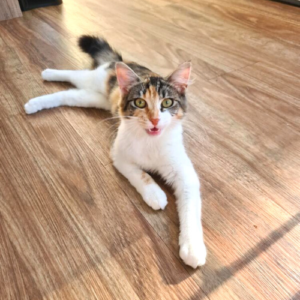 When cats arrive at the Home, they go through routine health checks and procedures to ensure they’re happy and healthy before going to their new homes. This is so we can identify issues like ringworm, which was affecting Motley when she came into our care in August.
When cats arrive at the Home, they go through routine health checks and procedures to ensure they’re happy and healthy before going to their new homes. This is so we can identify issues like ringworm, which was affecting Motley when she came into our care in August.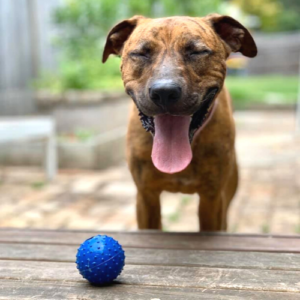 After over one year in our care, we’re pleased to announce our gorgeous Narla has found her forever home!
After over one year in our care, we’re pleased to announce our gorgeous Narla has found her forever home!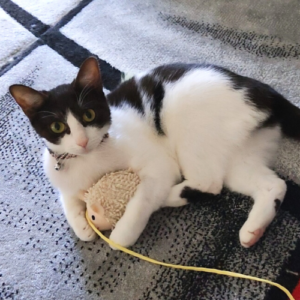 Aries appeared to be a happy, healthy cat when she was surrendered into our care in June. She passed standard health checks with ease and was sent to our adoption partner PETstock, where she could meet potential adopters and find a forever home.
Aries appeared to be a happy, healthy cat when she was surrendered into our care in June. She passed standard health checks with ease and was sent to our adoption partner PETstock, where she could meet potential adopters and find a forever home.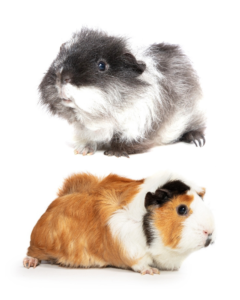 Nemo and Dory the female guinea pigs were brought to us in April after being abandoned on the side of the road. The poor girls were in a terrible state, living in a small, dirty cage.
Nemo and Dory the female guinea pigs were brought to us in April after being abandoned on the side of the road. The poor girls were in a terrible state, living in a small, dirty cage.
Recent Comments